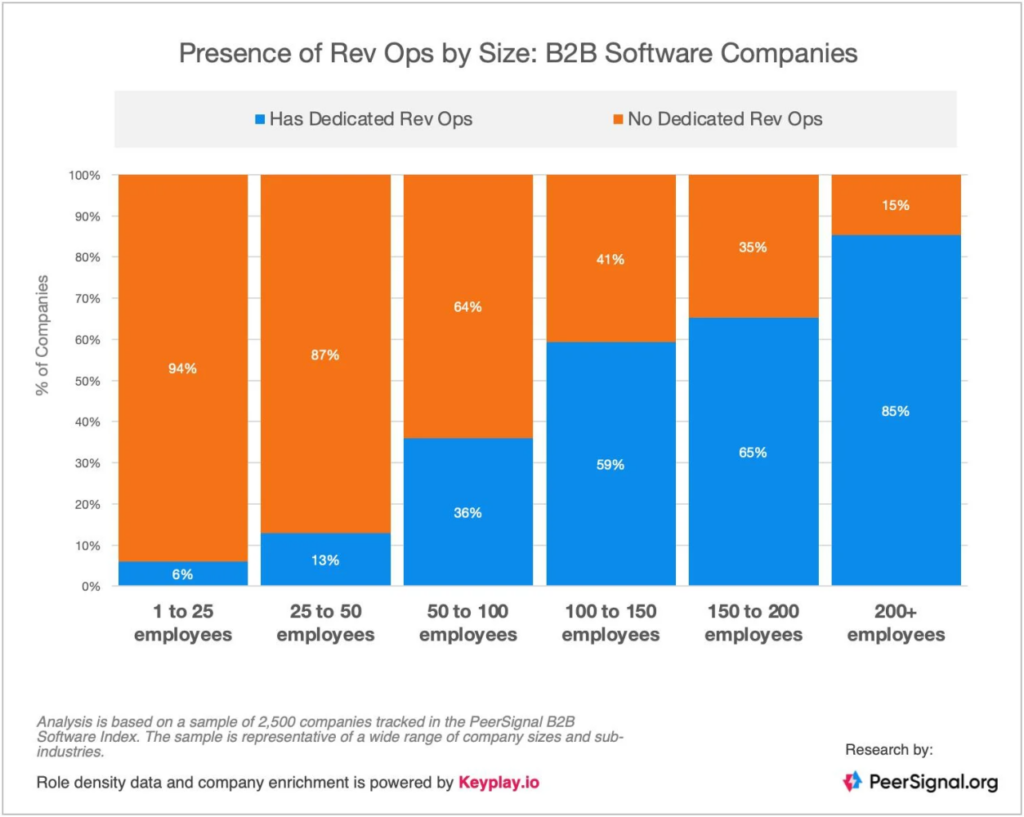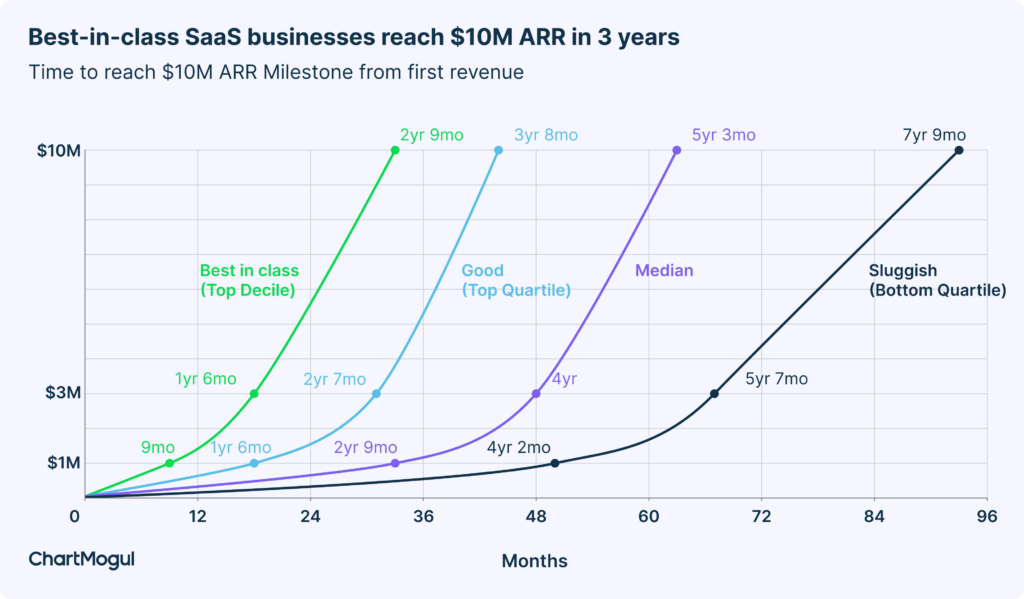Revenue Operations 101 for SaaS Companies

Revenue operations isn’t a magic wand, even though many present it that way. It’s a set of deliberate, strategic actions designed to improve your internal processes and drive revenue growth—no magic, just solid revenue operations management.
And that’s the best part. You get stable, predictable results without any gimmicks.
But when’s the right time to implement revenue operations in your organization? What methods does it involve? And how can you tell if it’s working?
Let’s get these answered.
What is Revenue Operations?
Revenue Operations (RevOps) is a business function that focuses on maximizing revenue by aligning the teams that directly impact the bottom line.
… Or, simply put, it’s a connecting link between your sales, marketing, and customer success teams. RevOps manages the operations across these teams, giving each one insight into the others’ strategies and encouraging collaboration. The goal is to make sure everyone is working toward the same objective.
The role of RevOps in SaaS
The mission of RevOps is clear — creating a unified strategy for the revenue-driving teams. But who’s this mystical “RevOps” creature?
Is it a Head of Sales? Perhaps a Chief Marketing Officer (CMO)?
RevOps is a hybrid job function. In smaller companies, it may be a few people from across several teams who work together to align their efforts. Bigger organizations usually hire a dedicated RevOps specialist or build entire teams to focus on this job.
“If you take a look around, the reality is, someone in your organisation is doing some of the work for you if there’s no dedicated RevOps role.”Claire King, Associate Director of Revenue Operations at Muck Rack
Even if you haven’t formally implemented a RevOps function yet, as Claire King pointed out in our recent panel discussion, there’s likely already someone in your organization handling some of the RevOps responsibilities.
So, how do you know when it’s time to build a dedicated RevOps function?
James Darragh, Head of Revenue Operations at dbt Labs, suggests startups should start thinking about RevOps as soon as they have a sales leader and 1-2 sales reps on board. And so does every single RevOps professional.
While it’s desirable to invest in operations from the get-go, the reality is that most companies create full-time, dedicated RevOps roles when they reach 100-150 employees.

By then, processes are already in place and becoming harder to manage. Chances are, these increasingly complex processes are showing signs that it’s time to focus on revenue operations.
Signs you need revenue operations
Does any of these ring a bell?
Your company growth depends on headcount
There’s nothing wrong with growing your headcount or relying on it to drive profits in the early stages. After all, you can’t build and maintain a multi-million-dollar company with just one person on each team.
But as your company scales, relying on headcount growth alone won’t cut it. It’ll eat up more and more resources until you hit a wall.
If your growth strategy is tied directly to hiring, you’re setting yourself up for a scalability trap. To keep growing — reaching more customers, expanding your offerings, and deepening your impact — you’ll need to find a way to boost revenue without adding headcount at the same rate.
Your teams are stuck in repetitive tasks
Fifty-one percent of knowledge workers report spending at least two hours per day on repetitive tasks.
And how exactly does it affect your revenue?
Think about it this way: if the average annual wage in the U.S. is $59,428, an employee wasting just two hours a day on inefficient tasks costs your organization about $14,857 a year. For an organization of 100 employees, we’re looking at over $1.48 million lost every year.
Beyond the direct hit to revenue, inefficient processes have some serious ripple effects. Over time, they hurt employee morale, lead to higher turnover, and drag down customer satisfaction. And you don’t need us to tell you how costly it is to deal with high employee turnover and poor customer experiences. Speaking of which…
You’re delivering an inconsistent customer experience
Whatever happens within your marketing, sales, and customer service teams has a huge impact on how customers perceive your brand.
We’ve all experienced it: you’re already a paying customer, yet the company’s sales department keeps cold-calling you. Or you tell your account manager you want to stop receiving promotional messages, but the marketing team keeps filling up your inbox.
It’s irritating the first time, and downright frustrating when it keeps happening. When the opportunity comes up, it might be enough of a factor to make you switch to a different service provider or simply leave a negative review — neither of which will help the company’s revenue.
These issues stem from gaps in the handoffs between marketing, sales, and customer service teams — which are way too common in organizations that haven’t centralized their tech stacks or aligned their operations yet.
Your data is siloed across teams
On average, organizations use 45 apps and systems daily. No wonder 79% of teams are siloed — each relying on its own tools, keeping data locked away and making it challenging for other departments to access essential customer information or analytics.
Data silos are a huge problem. The same research reveals that two-thirds of employees experience a negative impact on their work because they don’t have visibility into cross-functional projects.
When your teams work across disparate apps and struggle to maintain a single source of truth for data and information, they’re each operating in their own bubble. Best case, it causes miscommunication and productivity issues. Worst case, you may have to deal with lost data.
Of course, marketing teams need different tools than sales reps, and sales teams have a different tech stack from customer service. While there are all-in-one systems that claim to align these activities, they’re not always feasible options. They might lack specific features, offer insufficient quality, or come with a price tag that’s just too high — pick your battle.
While it’s nearly impossible to implement one piece of software that tackles all your problems, you can still consolidate your tech stack. This is what RevOps usually takes care of in the first place.
Your growth is slowing down
It’s common for startups to see rapid growth at the beginning, but at some point, that momentum can taper off — and that’s okay. It doesn’t mean you’re doing anything wrong, just that you’ve reached a natural turning point.
Think back to when it all started. You made your first sales, and the growth looked exciting (going from zero to anything always does). Then you added marketing, saw it work, and revenue grew even more with new customers.
You also realized the importance of keeping those customers happy, so you built a customer service team, and retention rates improved.
And now, you’re hitting a wall. Marketing is struggling to meet lead quotas, sales are stuck with long cycles, and customer service is overwhelmed.
It’s as if the wheels are starting to come off, and you need help systematizing everything to scale.
💡 The thing is, you can’t afford to stay flat for long. You need a solution, fast—only 13% of SaaS companies hit $10M ARR after ten years in business. Look at the numbers: after landing the first paying customer, best-in-class SaaS companies reach their first $1M ARR in just 9 months, $3M ARR in 18 months, and $10M ARR in under 3 years. Their growth isn’t linear—they keep accelerating as they hit key milestones.

All in all, if any of these challenges sound familiar, you might want to look into implementing the RevOps function.
What exactly RevOps do
Head of Revenue Operations is the fastest-growing job title in the US for a reason. They help businesses break down ineffective patterns and build ones that allow them to move beyond linear growth and accelerate revenue.
The question is, how do they do it? Here are the typical responsibilities of a RevOps manager:
CRM administration
The day-to-day work of people involved in the RevOps function is often a lot more technical and hands-on than people expect—it’s not just about big-picture strategy. One of their main tasks is managing the CRM: from setting up workflows to creating standard processes to making sure everyone knows how to use the system effectively.
To be more specific, within the scope of data management, RevOps typically oversees the following activities:
- Setting up the tech infrastructure, involving procurement, implementation, and employee training
- Centralizing data
- Automating data entry and other CRM workflows
- Developing and controlling data dashboards
And, with AI playing a bigger role in daily business processes, integrating AI into CRM workflows has become another key responsibility for RevOps. This might mean either bringing in new AI-powered software or exploring the AI features in your current tools — whatever it takes to keep your revenue-driving teams on top of industry best practices and stay competitive.
“As a RevOps leader, this is where I would leverage AI to help my GTM team:
Instead of asking our sales reps to manually add data from the meeting in CRM fields, I would automate these tactical, manual, time-consuming tasks.”Rosalyn Santa Elena, Founder and Chief Revenue Operations Officer at The RevOps Collective.
Managing tech bloat
CRM is only the cherry on top of your company’s diverse go-to-market (GTM) tech stack — and it’s the responsibility of RevOps to streamline it. To help you make the most of your software spend, they:
- Audit your technology stack and check for duplication
- Analyze utilization rates
- Revisit plans and monitor upcoming renewals
- Identify redundant or subpar software
- Procure the best software options for GTM teams
- Oversee technology integration and migration
- Drive new software and process adoption
… all while sticking to a long-term roadmap to manage change with minimal disruption, which doesn’t happen overnight.
Process optimization
While data and tech administration is a big part of RevOps, there’s more to it. RevOps specialists also focus on organizing operations within revenue-driving teams. They regularly revisit existing workflows and develop standard procedures to make everything run smoother.
Here’s what it usually involves:
- Identifying process inefficiencies
- Organizing documentation
- Creating and enforcing process guidelines
- Establishing communication best practices
- Setting expectations for cross-functional collaboration
Take the marketing-to-sales handoff process, one of the biggest pain points for most GTM teams. RevOps will step in like a referee here, helping both teams understand each other’s challenges and finally achieve alignment.
With a clear view of the final goals and the challenges faced by both sides, RevOps will set up clear lead qualification standards and define exactly what information should be passed along and how teams should communicate — without being biased toward either side.
Training and development
Since today’s business processes are mostly digital, RevOps plays a key role in training employees on new technology and ensuring smooth digital adoption.
RevOps people are often involved in running hands-on training sessions, creating user guides, and assessing tech knowledge among employees. For example, if your company introduces a new CRM or adds AI features, RevOps will handle the training process to ensure everyone knows how to use these tools effectively.
Revenue monitoring and forecasting
Each department in a company has its own set of goals that contribute to the big picture — marketers focus on lead generation, sales aim for deal size, and customer service targets customer lifetime value. While pursuing different objectives, it’s easy to lose a view of a shared goal, especially with siloed tech stacks.
That’s where RevOps steps in. They’re responsible for tracking revenue metrics that all teams impact and ensuring everyone stays on track toward shared goals. To achieve it, they:
- Centralize performance data
- Create and maintain dashboards
- Monitor bottom-line metrics
- Develop revenue forecasts
- Set or refine key performance indicators (KPIs) for revenue-driving teams
Using CRM and SaaS analytics tools like ChartMogul, RevOps can pull together revenue insights from across all functions. Beyond the total ARR (that doesn’t tell much on its own), they’ll see which marketing campaigns drive the most MRR, how much revenue direct sales contribute over self-serve, and which customer segments are showing the best retention rates.

Fixing whatever is broken
While we’d like to think of RevOps professionals as meticulous engineers, their role is more like that of a firefighter. They spend a lot of time solving problems that arise daily, if not hourly.
Their day-to-day tasks can vary greatly between organizations, and since no two companies face the exact same challenges, no two RevOps managers have the same daily routine.
Metrics to track in revenue operations
The ultimate goal of a SaaS business is driving revenue growth — so it’s only logical to set MRR and ARR as key metrics to track, right? While these two will definitely be on your dashboard, they don’t tell the full story. There are many more metrics that RevOps professionals keep track of, such as:
- MRR Movements: breaking down MRR into these components helps to see your business performance more accurately: New Business MRR, Expansion MRR, Reactivation MRR, Contraction MRR, Churned MRR.
- Lead conversion rate: is especially valuable for measuring how well leads are being handed off from marketing to sales.
- Sales cycle time: tracks how long it takes to close a deal. RevOps aims to streamline sales, and this metric helps measure progress on that front.
- Customer acquisition cost (CAC): shows how much you spend on sales and marketing to get a new customer.
- Customer churn: measures how many customers are leaving and how it impacts your revenue.
- Customer lifetime value (LTV): estimates the total revenue a customer will generate before they leave.
- Forecast accuracy: shows how close your actual results are to what RevOps predicted. The better the accuracy, the better you can predict future growth.
ChartMogul helps to keep track of all of these and beyond. Our reports will assist you all the way from assessing the need for investing in revenue operations to monitoring your RevOps performance. Get started with ChartMogul today.


